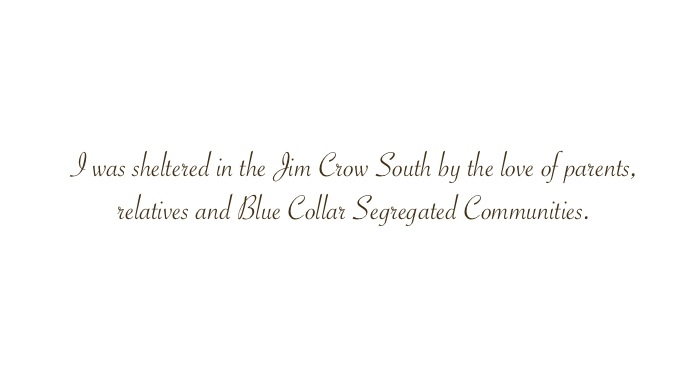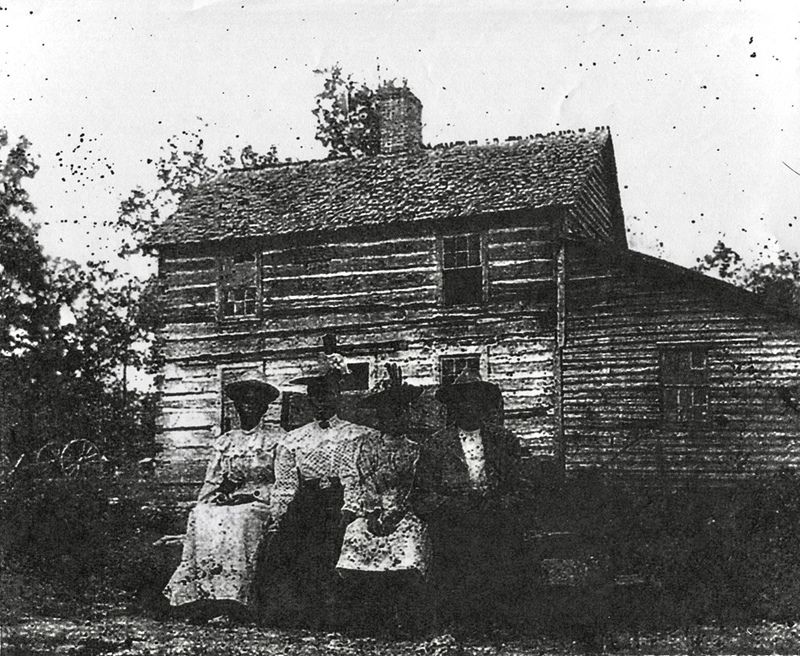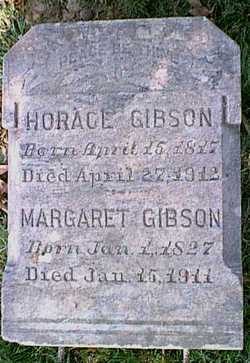Institutions - Making Ilda "Geographic"
“Geography,” writes Cynthia McKittrick, “is not … secure and unwavering; we produce space, we produce its meanings, and we work very hard to make geography what it is.[1] Ilda’s founders and other Black Fairfax residents did all they could to build households, communities and networks that would insulate their families and nurture future generations. These distinctly Black geographies -- necessitated by segregation in every aspect of life -- extended from schools and churches to social clubs and even burial grounds. This map of the area's Black social institutions illustrates the growing network and number of such nodes in the area around Ilda but also their great distance from it, for people who often traveled on foot. Yet few were geographically close, for people who often traveled on foot. Why such organizations were absent from Ilda itself is discussed on the next page, Destabilizing Ilda. As you read on here, you may return to this map to see how Black Fairfax made itself "geographic."
This map marks institutions (labeled "B") available to Black residents of Ilda, which is marked with a star, as well as a few, nearby, that were not ("W" for whites-only). Labels will pop up as you zoom in and out. For fuller information on any site, click its map node. The nodes denote schools (blue), churches (orange), cemeteries (green) and social organizations (magenta); to see all of one type or another, use the "layers" stack at bottom right, and individual sites can be located by name using the search bar.
Before institutions, for those who could manage it, came property. As Viola Richardson, who grew up in Ilda, told an interviewer, “[M]y father always said, it's money in the dirt bank.”[2] Driven by memories of slavery, postbellum Black citizens, like most Americans of their era, held a veneration of land ownership that they passed to their children. In Fairfax, where exploitive tenant-farming practices never took hold, many could realize it. “My grandmother … had always been taught by her father that you must have land, that is how you are a good citizen, that is how you create wealth, that is how you get somewhere in life is through land,” recalls historian Marion Dobbins, who grew up in The Pines community of Merrifield. “So it was really important for him to have land and to be able to will land to his children,” and he did.[3]
Tax rolls, deeds and the occasional legal dispute (horse sales seemed especially problematic) from as far back as the 1860s show Black Northern Virginians acquiring basics like farmland, furniture, carts and livestock.[4] By the early post-war years, James Lee of Falls Church owned fine items, as well, like a clock and a sewing machine.[5] Oral histories tell us the Johnson family, at least by the 1920s, and members of the Collins-Lee clan at Merrifield, owned pianos and other musical instruments, part of a hearty culture of music education and entertainment.As early as 1870, Shoop found, Horace Gibson paid taxes on “two horses ($100), one head of cattle ($10), five hogs ($25), two carriages ($35), various mechanic’s tools ($10), and farming implements ($15).”[6]
Perhaps as essential as land to Black Virginians, who had gathered regularly for prayer even under slavery, was the formation of churches, with or without buildings. Ildans originally worshipped in Falls Church, where a combined prayer meetings (“nearly every night”) in the immediate post-Civil War years had birthed two Black churches, Galloway Methodist and Second Baptist. “Two rooms were built for the two white women who came into town from the north to teach Negroes,” recalled an old-timer, shoemaker George Thomas, in 1928. The Rev. Hiram Reed, “a white man … living where his relatives had been killed by Mosby’s men” led Black prayer services, eventually becoming the founding minister of Second Baptist.[7]
Black Ildans, having no local church, usually joined one of these. Nearer still, after its building was completed in 1895, First Baptist of Merrifield drew congregants from Ilda. Marion Dobbins, who was raised in that Merrifield church, remembers attending Sunday School in the 1950s superintended by Ilda descendant Clarence Gibson. Then as now she says, Black churches served as both network and safety net: “[T]he interesting thing I think about Merrifield and the Pines is that we really had our own; we really took care of each other… If a family needed, I remember at church services they would say we are gonna hold a special collection because sister so-and-so needs to buy her medicine… The churches, at least Merrifield and I know the other churches in the area, the black churches were really like your social settings: You went there for everything.”[8]
Viola Johnson Richardson, one of eleven siblings raised on a 30-acre Ilda farm, recalled switching to First Baptist at age 14. “My baby sister and I, we decided to go to Merrifield because it was closer,” she recounted, drawn also by the thriving music program run by Guy Collins, a member of one of Merrifield’s founding Black families. “Closer,” in this case, meant just a three-mile walk each way, compared to the nearly seven miles their widowed mother, Amy Johnson, continued covering to and from Mount Pleasant Baptist in Alexandria. (This being the 1930s, possibly the family had the use of a farm vehicle or car.)
Dobbins describes how First Baptist of Merrifield linked members of three local communities, Williamstown, The Pines and “Merrifield itself,” not to mention outliers like the two sisters from Ilda. "[L]ike most churches created by the African American community," she explains, First Baptist "was there because there was no other organizations to help African Americans… to bury your dead, to help you when you were sick, to provide food, shelter, civil rights activism, not only to feed you spiritually. It was a center that worked alongside of the school system, that helped African American children … to become a good citizen[s] of Fairfax County.”[9]
In many cases, the churches not only worked with but stood in for a school system, run by white people but supported by all, that neglected Black students. Churches filled the gaps, early on, even serving as school houses. Once the school system began, however grudgingly, to build simple Black schoolhouses, churches stepped in to offer extracurricular education, training and society.
For Black Ildans, as with church, attending school entailed commuting. The earliest known school at Ilda appears to have stood within a mile of Gibson’s shop, but it was for white children only. Public school contracts for the 1887-1888 school year show that a teacher named Byrne was hired to teach at “Gooding's” or “Catonville” School. The names refer to local landowners, William Gooding, Sr., who sold Horace Gibson his parcel, and James and Annie Caton, who may have received the school site from Gooding, a relative. The Catons deeded it to the school district only to reclaimed it in 1915, when the by then disused school had burned down.[10] This is apparently the “Sch’l Hse” visible on the 1878 Hopkins Map just west of Gibson’s shop.[11] It took only a handful of white families at Ilda, in other words, for a school to be established.
For Black children able to walk a few miles, school options did dot the landscape, meeting in churches, homes or disused plantation buildings, and eventually, purpose-built (if basic) schoolhouses. The earliest Black school in Fairfax is said to have been that formed by the First Baptist congregation of Vienna on land donated by Union Army Major Orrin E. Hine in 1867. "An 1878 county map labels the building as ‘Cold. Schl Ho.’ [for Col’d –colored – School House], indicating its dual roles. The school was moved to the intersection of Lawyers Road and Malcolm Road; within the Falls Church School District it became known as Public School for the Colored No. A." Another early Black school was founded at Fairfax Courthouse between 1874 and 1878. Others followed in Vienna, Mount Pleasant, Seminary Hill, Merrifield, and Bailey's Crossroads.[12]
Due to segregation, most of Ilda's Black children walked to the “colored school” of Merrifield, which in 1897 moved into its first schoolhouse after 15 years of meeting in homes and other spaces, despite the presence of county schools less than a mile from their homes.[13] “The schools was far,” confirmed Viola Richardson of the commute. “That was six miles a day, and a one-room school.”[14]
Secondary school options were even rarer. In the absence of a single high school for Black students in all of Fairfax, students spent hours each day traveling either to the Manassas Industrial School or, for those able to pay tuition or pose as District residents, to schools in Washington. Ilda descendant Dennis Howard recalled that his relatives “used to sneak across” to D.C. schools using borrowed addresses, “because Washington, D.C., in the ‘40s and ‘50s had a much stronger school system for blacks … [T]hey would ride with my grandfather in his truck in the morning, and, then, they would ride with him coming back in the evening, because he worked in Washington, D.C.”[15] For the Manassas commuters, the school board that wouldn’t build a Black high school did provide one bus, unheated, for the entire county. “We had to get up at five o'clock in the morning, [and] get out on the road no later than quarter to seven, to get that county school bus,” Viola Richardson remembered. Students from Gum Springs, to the east, had to board even earlier, she noted.[16]
Yet like the churches, even this singular hardship of segregation, the long, shared commute, forged a stronger Black community, said Howard, who, as the son of an alumna, assembled a book about the Industrial School.[17] “While they didn‘t appreciate the separate and unequal part of it,” he said of his mother and her schoolmates, “they did like the fact that it socialized a large number of black folks, and, for generations, if you had gone to the Manassas Industrial School, children like me coming along, they would simply ask you, well, did they go to the Manassas Industrial School, and you could be anywhere in Northern Virginia, and if you said yes, in any one of about ten, fifteen counties, they would know your parents or your grandparents, and then many of the people that actually taught at those schools, they attended the same churches, so there was a benefit to the closed systems, you know.”[18]
After the county opened its first Black high school, Luther Jackson, in Merrifield in 1954, students dedicated their first senior yearbook to “parents and patrons, the dreamers who fought so diligently to make this school a reality.” They could have been speaking to Black elders across the county – and across the years.[19]
These dreamers formed social and service clubs, as well. Like prayer and education, death was segregated in Virginia. In yet another form of Black placemaking, area men’s lodges organized to ensure final resting places. In Merrifield, where a covenant barred the use of the Baptist church grounds for burial purposes, the Sons & Daughters of Liberty society created a Black cemetery as part of The Pines community.[20] In Fairfax, Horace Gibson was a member of the Sons and Daughters of Benevolence Lodge that petitioned Fairfax County to allow a new cemetery for African Americans, founded in 1868 in nearby Jermantown and where Horace, Margaret, Strother and his wife Martha and other Gibson family members forever rest.[21]
Other clubs included the Fairfax Colored Association, co-chaired by Horace and Margaret's daughter (and Page and Emily Parker's daughter-in-law) Matilda Gibson Parker. The club's activities included dispatching care packages to local servicemen stationed abroad. And “[t]he Merrifield Improvement Association addressed topics such as poor electric service, the relocation of the school for black children, and improving services offered by the county welfare agent.”[22]
By voting, too, Black (male) Ildans planted themselves on the county map, despite obstacles placed in their way. Voting during the heyday of Black Ilda was technically race-blind. By the turn of the century, though, suffrage was growing shakier for Black voters statewide: A new state constitution, in 1902, intended as a corrective for Reconstruction imposed a poll tax and complicated literacy requirements.[23] Yet we know Ilda’s two Black elders, Gibson and Parker, nevertheless voted that year.[24] We also know that Horace’s son Strother assumed roles in the county's (soon to be diminished) Republican party in the 1890s, serving as a Fairfax delegate to the 1892 Congressional Convention.[25]
[1] McKittrick, Demonic Grounds: Black Women and the Cartographies of Struggle, xi.
[2] Richardson, Viola Richardson oral history.
[3] Marion R. Dobbins, Interview with Marion J. Ransell-Dobbins, 2008 (transcript), interview by Byrne, Linda, 2008, 4, Providence District History Project, “Providence Perspective,” https://research.fairfaxcounty.gov/ld.php?content_id=54175404.
[4] Tom Shoop, “Cornerstones: Bias and Burials at an American Crossroads” (Charlottesville VA: University of Virginia Press, forthcoming), 40.
[5] Dobbins, Interview with Marion J. Ransell-Dobbins, 2008 (transcript), 2.
[6] For musical instruments, Dobbins, 4 and 19 and Richardson, Viola Richardson oral history. For Horace Gibson's inventory, Shoop, “Cornerstones,” 37.
[7] Melvin Lee Steadman, Falls Church, by Fence and Fireside. (Falls Church, Va: Falls Church Public Library, 1964), 212–13.
[8] Dobbins, Interview with Marion J. Ransell-Dobbins, 2008 (transcript), 7.
[9] The History of The First Baptist Church of Merrifield Trailer, 2014, https://www.youtube.com/watch?v=p0wSzquvFFo.
[10] Charles Rinehart, Louis Berger Group, Inc., “Guinea Road Cemetery,” 27. Jeff Clark, “Fairfax County Historic Schoolhouse Deeds List” (Fairfax County Circuit Court Historic Records, 2021).
[11] Griffith M. Hopkins Jr., Atlas of Fifteen Miles around Washington, Including the County of Montgomery, Maryland - Providence Dist. No. 5, Langley P.O., image (Philadelphia: G.M. Hopkins, 1879), https://www.loc.gov/resource/g3850m.gct00186/?sp=2&st=gallery. Charles Rinehart, Louis Berger Group, Inc., “Guinea Road Cemetery,” 27.
[12] Charles Rinehart, Louis Berger Group, Inc., “Guinea Road Cemetery Study,” 27.
[13] “Mills Crossing/Merrifield,” Fairfax County African American History Inventory, accessed May 5, 2023, https://fairfaxaahi.centerformasonslegacies.com/items/show/133.
[14] Richardson, Viola Richardson oral history.
[15] Dennis Howard, Oral History Interview with Dennis Howard, interview by Byrne, Linda, 2005, 830, A Look Back At Braddock Oral History Project, https://research.fairfaxcounty.gov/ld.php?content_id=54175404.
[16] Richardson, Viola Richardson oral history. Marion Dobbins mentions in her interview hearing from friends who rode it that the bus lacked heat.
[17] Dennis E. Howard Jr., The Blood of the Lamb: A Story of the Manassas Industrial School for Colored Children Told Through the Eyes of Former Students, 3rd ed. (Washington, D.C.: The Potomac Healthcare Institute, Inc., 2008). A non-circulating copy is available in the Virginia Room of the City of Fairfax Public Library.
[18] Dennis Howard, Oral History Interview with Dennis Howard, interview by Byrne, Linda, 2005, 829, A Look Back At Braddock Oral History Project, https://research.fairfaxcounty.gov/ld.php?content_id=54175404.
[19] Natalie C. Hockaday, “The Story behind Fairfax County’s First Public High School for Black Students,” wusa9.com, February 2, 2023, https://www.wusa9.com/article/news/local/virginia/the-story-behind-fairfax-countys-first-public-high-school-for-black-students/65-e191b928-ee36-4997-b4e0-a05eb21b0653.
[20] “Sons & Daughters Of Liberty Cemetery - Cemeteries - Fairfax County, Virginia,” Fairfax County Cemetery Survey, accessed April 29, 2023, https://www.fairfaxcounty.gov/library_cemeteries/Cemetery.aspx?number=FX187.
[21] Charles Rinehart, Louis Berger Group, Inc., “Guinea Road Cemetery Study,” 27.
[22] “Hareem Badil-Abish, ‘United States Social Security Death Index’ • FamilySearch,” 30.
[23] Patricia Donahue, “Silent Majority and Civil Rights: Evolving Views of ‘Them’ and ‘Us:’ Of Our Own Making,” in Participation, Community, and Public Policy in a Virginia Suburb (Lanham MD: Lexington Books, 2017), 140.
[24] Fairfax County Registrar of Voters, “Fairfax County General Register of Voters, 1902 - Fairfax C.H. Precinct - Roll of COLORED Voters,” n.d., Fairfax Circuit Court Historic Records Center, https://www.fairfaxcounty.gov/circuit/sites/circuit/files/assets/documents/pdf/hrc/general-register-of-voters-fairfax-court-house-1902.pdf.
[25] Badil-Abish, Shades of Gray, 42.
Mandy Katz






